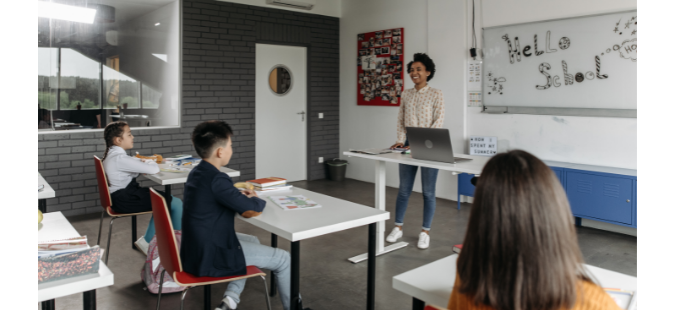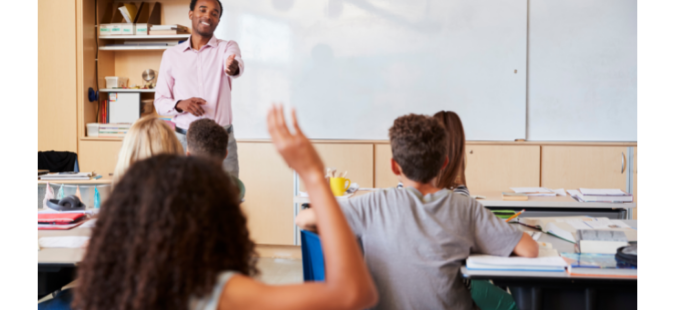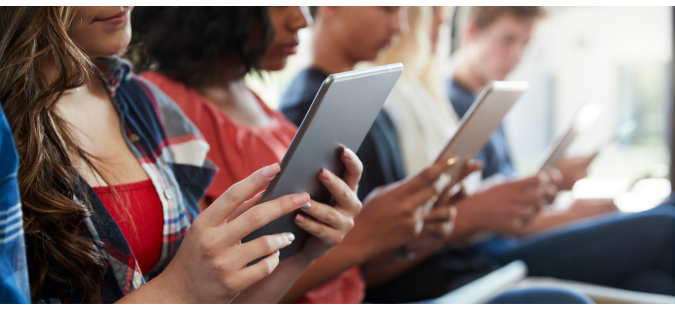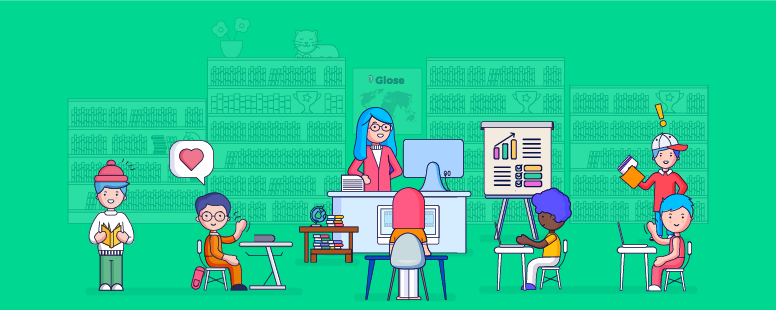Teaching and Learning Post Covid
Christophe Spy/ August 2, 2021/ 21-22 SY, Teaching and Learning/ 0 comments
Teachers engaged in steep learning curves as they made distance learning work for their students and them. As a result of teachers selflessly grappling to hold everything together, different and even more effective ways of teaching and learning became a part of their pedagogical toolboxes. Schools made quality moves with student betterment in mind, and many of these strategies will contextualize the impact teaching during a pandemic has had on the educational field.
The unorthodox and groundbreaking decisions that worked, and make sense to continue, will help educators redefine what good teaching and learning look like as we make our way out of the pandemic and back into classrooms. The following seven strategies are a compilation of effective instructional choices made by teachers during the pandemic. Read through and use them as what to look-for as teachers conceptualize post-pandemic teaching and learning:
Pressing the “YES” Button
Teaching to students in their living rooms certainly wasn’t easy. Yet, outstanding teaching took place as we saw teachers adopt strategies from other fields of study, rely on social media platforms, and become daily innovators as they broke through multiple learning barriers. Backing them up, administrators cheered on their creativity, helping to assess the effectiveness and sustainability of these new efforts.

Pandemic learning allowed educational stakeholders the freedom to try new techniques. As a silver lining from the pandemic, teachers have created a vision for best-serving students. Moving into this new school year, we should prepare to assist and encourage teachers while trying out innovative strategies for engaging students.
Instructors will keep up their momentum by using strategies to which students responded best and feel more comfortable as they try new technology, unique grouping ideas, and differentiated meeting formats approved by leadership team members. The novelty will not wear off just because educators and students are going back to brick and mortar buildings; instead, it will propel the field forward as we redefine high-quality instruction and introduce new strategies for learning.
Widespread SEL Scaffolds
Students suffered undue trauma that will affect them for many years to come. Factors such as isolation, family illness or death, food, job scarcity, increased domestic violence and abuse, heightened neighborhood crime, and breakdown of mental supports will all play a role in how teachers provide care for students.

As crucial as curriculum implementation will be, teachers must put students’ social and emotional (SEL) needs before anything else on their lesson plans. Teachers will reinforce students through daily emotional check-ins and provide referrals for food, clothing, and shelter needs. In addition, school psychologists will step in to work through mental health concerns so that students and their families have a strong network behind them as they deal with the negative impacts of the pandemic.
The consequences of the pandemic influenced every student’s lives, and teachers will best serve them by putting SEL skill-building front and center. Establishing class talks as a constant routine in the daily schedule can help teachers pulse-check student SEL needs, assisting to proactively care for students as they find their way back into the classroom.
Relationship Building
It wasn’t easy to build strong relationships with 100% of students when students had their cameras off or weren’t sure how to engage with virtual lessons actively. But, according to MAEC, building relationships is a critical factor that drives student learning and success. Teachers who struggled to connect with students in the remote classroom will take this challenge head-on and work to create strong bonds with students in post-pandemic school.

Around the nation, students have cited a feeling of disconnection from the classroom, teacher, and peers. Just because students won’t be learning remotely anymore doesn’t mean that this feeling will go away. However, teachers can count on students to bring this wary sentiment into the classroom as they gain trust and learn how to re-engage and participate in school.
Relationship-building ice-breakers, check-ins, one-on-one feedback sessions, and daily notes of affirmations should continue to accentuate how students build a narrative around how much their teachers believe in them. In addition, making time to get to know students personally while sharing fun experiences will jumpstart the formation of deep connections needed by both teacher and student.
Rethinking Assessments
With reduced teaching time and an inability to hold students accountable for taking evaluations independently, unnecessary assessments were laid to the side. Teachers instead opted for quick learning checks, turned more extensive tests and quizzes into creative projects, and trusted student work samples to assess student mastery of newly learned skills accurately.

Teaching post-covid will reflect this forward-thinking ideal. But, as we all know, student learning is not best found through mastery of a formal assessment but rather through student performance while working on a project, learning collaboratively, or with daily exit tickets used to determine the effectiveness of lesson delivery.
We will see lessons shortened to make time for other additions designed to address students’ needs. Both assignments and assessments will be turned into interactive and fun experiences that students will want to complete and give teachers valid snapshots of student mastery. This highly effective method of uncovering student progress via authentic work samples will find a healthy and supportive place in the post-covid classroom.
Flexing Student Agency Muscle
During asynchronous learning, students were expected to complete assignments on their own. Many students used their agency to learn with their own unique learning styles and determine deadlines and timeframes within the day that worked best for their schedules. Student agency is defined as “the capacity to set a goal, reflect and act responsibly to affect change,” by OECD Learning Compass 2030: Student Agency for 2030.
Instead of relying on just one right way’ to solve a problem or answer a question, students used their independence to learn content in their way, ultimately surprising teachers by showing how much they know, understand, and can do with each topic. In addition, teachers found that expecting and promoting students to use their agency with asynchronous learning was effective for even the most hesitant learners.
Teachers will promote student agency in the new year by stripping away unnecessary expectations of minute and insignificant details attached to learning tasks. Teachers will become more flexible with class assignment parameters and allow students to decide criteria that should be used in determining mastery of the content. Expectations around turning in classwork by the end of each daily lesson will be reworked as lessons are completed when it makes the most sense for each student.
Increased Use of Strategic Tech
Reliance on technology isn’t new to the pandemic, although it may feel new for many aspects of student learning, especially those pertinent to the lower grade levels. For example, teachers that have always relied on hard copies, worksheets, and marble composition books, had to learn tech-savvy ways for students to complete assignments, keep notes, and input answers.

This won’t go away as we move into the 2021-2022 school year. Teachers will continue to use technology as much as they did during remote instruction. Daily agendas will be found on the school’s Learning Management System. Paper notebooks will become e-notebooks, flyers, and communications will be sent through direct messages, and housing student assignments and folders will leave the classroom counter space and enter virtual platforms.
Many of the Learning Management Systems have integrated dashboards teachers will use to track student progress and provide scaffolded support as necessary, providing an essential overview on student learning. The ease of accessibility of lessons, assignments, and communications is a benefit that teachers, students, and families have learned to appreciate.
In-Person Collaborative Learning
Teachers are eager to overcome social hurdles that distance learning has had on students’ desire to learn collaboratively. The stress of making school friends in zoom rooms added to increased reliance on social media has led to unfair pressure on collaborative learning expectations.
While learning online, teachers struggled to encourage students to work together in pairs or small groups. When asked to solve problems and dive into questions together in breakout rooms, teachers often found that students stayed silent and kept their cameras off, leading students to prefer completing assignments independently. To combat this issue, teachers used various strategies to encourage students to work and learn together, with many finding their way into next years’ curriculum.
Teachers will take time at the beginning of the year to norm and name characteristics of high-quality group collaboration skills. Activities will be introduced so students can practice partner learning. Students will relearn how to work together, and teachers will proactively build up social solid foundations for students. As a result of high levels of scaffolds at the beginning of the year, schools will see learners ease right back into collaborative learning scenarios by the end of the first quarter.
Everpresent in post-covid classrooms will be an influx of innovative instructional strategies teachers discovered during last year’s virtual learning. Teachers pulled out all the stops as they worked to build relationships with students, employing techniques that made learners feel welcome and wanted in online classes and functioned to hold student attention through rigorous and standards-aligned remote instruction.
These strategies will bolster student progress as educators critically approach learning opportunities in the new year. Post-pandemic teaching and learning won’t be easy on either student or teacher, but it will serve to erase outdated educational policies and systems that held stakeholders back. Instead, the work teachers have put into distance learning will underpin a new era of education.
